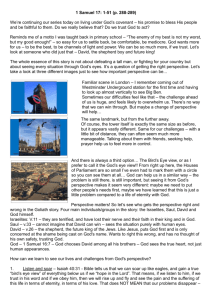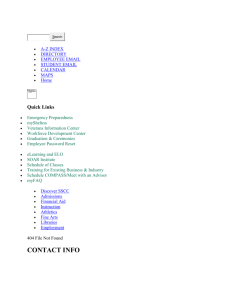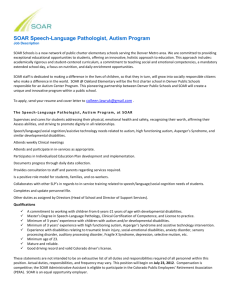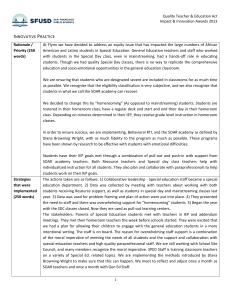A Hands-on Soar Tutorial
advertisement
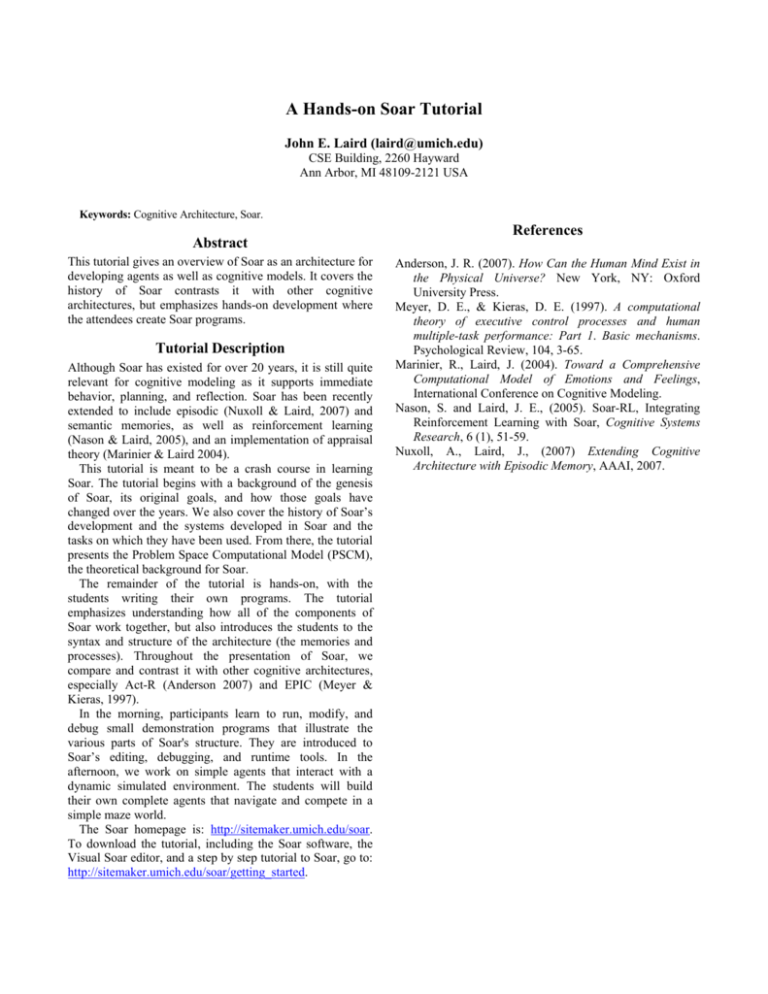
A Hands-on Soar Tutorial John E. Laird (laird@umich.edu) CSE Building, 2260 Hayward Ann Arbor, MI 48109-2121 USA Keywords: Cognitive Architecture, Soar. Abstract This tutorial gives an overview of Soar as an architecture for developing agents as well as cognitive models. It covers the history of Soar contrasts it with other cognitive architectures, but emphasizes hands-on development where the attendees create Soar programs. Tutorial Description Although Soar has existed for over 20 years, it is still quite relevant for cognitive modeling as it supports immediate behavior, planning, and reflection. Soar has been recently extended to include episodic (Nuxoll & Laird, 2007) and semantic memories, as well as reinforcement learning (Nason & Laird, 2005), and an implementation of appraisal theory (Marinier & Laird 2004). This tutorial is meant to be a crash course in learning Soar. The tutorial begins with a background of the genesis of Soar, its original goals, and how those goals have changed over the years. We also cover the history of Soar’s development and the systems developed in Soar and the tasks on which they have been used. From there, the tutorial presents the Problem Space Computational Model (PSCM), the theoretical background for Soar. The remainder of the tutorial is hands-on, with the students writing their own programs. The tutorial emphasizes understanding how all of the components of Soar work together, but also introduces the students to the syntax and structure of the architecture (the memories and processes). Throughout the presentation of Soar, we compare and contrast it with other cognitive architectures, especially Act-R (Anderson 2007) and EPIC (Meyer & Kieras, 1997). In the morning, participants learn to run, modify, and debug small demonstration programs that illustrate the various parts of Soar's structure. They are introduced to Soar’s editing, debugging, and runtime tools. In the afternoon, we work on simple agents that interact with a dynamic simulated environment. The students will build their own complete agents that navigate and compete in a simple maze world. The Soar homepage is: http://sitemaker.umich.edu/soar. To download the tutorial, including the Soar software, the Visual Soar editor, and a step by step tutorial to Soar, go to: http://sitemaker.umich.edu/soar/getting_started. References Anderson, J. R. (2007). How Can the Human Mind Exist in the Physical Universe? New York, NY: Oxford University Press. Meyer, D. E., & Kieras, D. E. (1997). A computational theory of executive control processes and human multiple-task performance: Part 1. Basic mechanisms. Psychological Review, 104, 3-65. Marinier, R., Laird, J. (2004). Toward a Comprehensive Computational Model of Emotions and Feelings, International Conference on Cognitive Modeling. Nason, S. and Laird, J. E., (2005). Soar-RL, Integrating Reinforcement Learning with Soar, Cognitive Systems Research, 6 (1), 51-59. Nuxoll, A., Laird, J., (2007) Extending Cognitive Architecture with Episodic Memory, AAAI, 2007.

